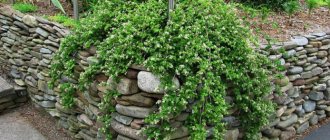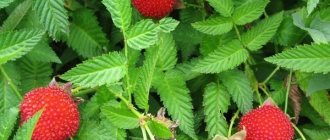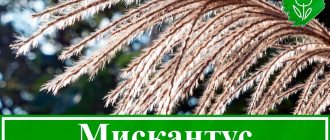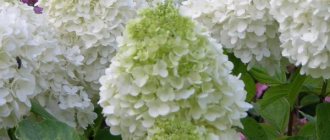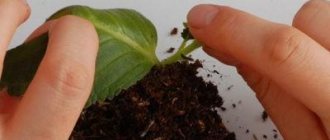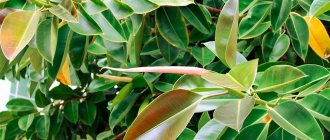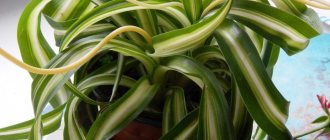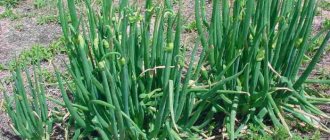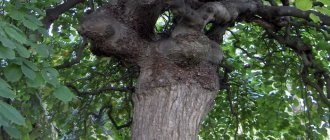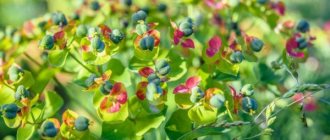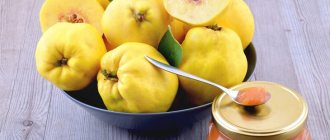Acquaintance
Astrantia is a perennial flowering plant of the Apiaceae family.
The aerial part is represented by a rosette of palmate leaves. Straight, tall stems, practically devoid of foliage, bear a scattering of small flowers collected in umbrella bouquets, and the star-shaped wrapper is represented by leaves of predominantly white or pink color, which gives the plant a special decorative appearance. Astrantia: flower
The genus Astrantia includes several species of plants, whose homeland is Southern and Central Europe. There are mainly four types used in culture:
- astrantia large
- astrantia minor
- astrantia three-incised
- astrantia greatest.
Astrantia large, living in the European part of Russia, is a rare species, so it is listed in the Red Book.
Botanical description
The rhizomatous plant astrantia has straight, slightly branched and weakly leafy stems from 15 to 90 cm in height. The leaves, collected in a basal rosette, are predominantly palmate-lobed or palmately divided with 3-7 obovate or lanceolate lobes, serrated along the edge. Numerous small flowers of white or pink-ruby color are collected in simple umbrella-shaped inflorescences that resemble stars. Large leaves of the wrapper are painted in bright shades of green, which adds decorativeness to the plant.
Astrantia blooms in May and blooms until early autumn. The fruit of Astrantia is a two-seeded plant.
Astrantia is a honey plant that attracts bees to the garden. It is cold-resistant and drought-resistant. Astrantia is planted in groups in the center of the lawn, in ridges, borders, mixborders and flower beds. In the garden, Astrantia's partners are hostas, lungworts, geraniums, astilbes and variegated heucheras. Astrantia stands up well when cut, preserving the beauty and freshness of the inflorescences for a long time. It is even used for winter dry bouquets.
- Madder: properties and contraindications, cultivation
The main advantage of astrantia, in addition to its visual attractiveness, is its amazing undemandingness both in terms of care and growing conditions, so planting and caring for astrantia is not work, but pleasure.
Types and varieties of astrantia with photos and names
Growing alyssum when and how to plant it from seeds
In total, there are more than 10 different types of astrantia, but only 3 of them are most cultivated.
Large astrantia (Astrantia major), or large astrantia
In nature, this species can be found in the west of the European part of Russia, in Moldova, Ukraine, Belarus, Central Europe and the Baltic countries. This plant prefers to grow on lawns and edges of broad-leaved and coniferous forests. The height of the spreading bush is about 0.7 m, and its diameter is approximately 0.4 m. The basal rosette consists of three to seven-part long-petioled leaf plates. Light pink flowers are collected in simple umbrella-shaped inflorescences, the diameter of which is about 50 mm. The color of the wrapper leaves is green or light pink. Cultivated since 1597. The most popular varieties:
- Moulin rouge. The inflorescences are painted wine-red, while the involucre leaves are a darker, almost black shade. The most spectacular are the flowers of bushes grown in sunny areas.
- Ruby Wedding. The bush reaches a height of 0.65 m, the color of the flowers is dark red. This variety is recommended to be grown in a shaded place.
- Claret. The color of the flowers is burgundy, transparent wrappers of the same color. The height of the plant is 0.55 m. Astrantia blooms in the first days of July, and flowering ends in the last days of September. It is recommended to grow in partial shade and shade. Can be cultivated in a container.
- Diva. The flowers are dark red, and the involucres are a lighter shade. The height of the plant is approximately 0.7 m. The variety can be grown in a sunny or shaded area.
- Venice. The color of the inflorescences is ruby.
- Lars. The height of the bush is about 0.75 m, it is decorated with pink inflorescences, their color is so rich that it seems to glow in the dark.
- Sunningdale Variegata. The color of the inflorescences is pale lavender. On the surface of the green leaf blades there are strokes of cream and yellow-golden color.
- Rosensymfony. The height of the plant is about 0.7 m. The inflorescences are pink, and the wrappers are pale pink.
- Rosea. The height of the plant is approximately 0.6 m. The inflorescences are bright pink, and the leaf blades are spotted.
- Snowstar. The color of the flowers is white, and the wrappers are white with green. The plant reaches a height of 0.55–0.7 m. It is recommended to grow this variety in partial shade and shade.
- Abbey Road. Astrantia is red, the color of the inflorescences is purple, and the wrappers are of a darker shade.
Astrantia maxima
The homeland of this species is the Caucasus. The height of such a compact plant is 0.7 m; it is long-rhizome. The leaf blades are tripartite. The diameter of simple umbrella-shaped inflorescences is 45 mm, they consist of small pink flowers. The involucre leaves are painted a very pale red color, they are membranous and reach 10 mm in length. Flowering occurs in August and September.
Astrantia minor
In nature, this plant is found in the southern part of Western Europe and prefers to grow in the mountains. The height of the bush is almost 1 m. The leaf blades with long petioles are three to seven-parted. The diameter of the umbrella-shaped inflorescence is 30 mm, it consists of a large number of pink-white flowers. Flowering occurs in July-August. Cultivated since 1868
Astrantia carniolica
This is a herbaceous perennial plant. Opposite leaf blades are palmately divided. Umbrella-shaped inflorescences consist of white flowers. The most popular variety is Rubra. The color of the flowers and wrappers of this variety is bright pink, turning into red. The plant reaches a height of 0.7 m. Flowering begins in the last days of May and ends in the last days of August.
Gardeners also sometimes cultivate three-cut astrantia, Bieberstein, hellebore and Bavarian.
Growing conditions
Godetia growing from seeds when to plant
Astrantia has very few requirements for growing conditions. This absolutely unpretentious plant takes root well both in sunny bright areas and in shade, without showing any weakening in the rate of flowering or changing the color of the leaves. It is not suitable for deep shade, but partial shade is comfortable for it in any concentration. Even among trees, this charming beauty will easily reveal her landscape talents and create pretty thickets from the openwork lines of charming blades of carved leaves.
Astrantia is one of those perennials that you don’t have to worry about planting in special soils: ordinary soil is quite suitable for it, the main thing is that it is not too problematic, depleted and dense. Of course, the soil should be at least slightly fertile, but it is not at all necessary to specially improve it.
Growing astrantia from seeds
Growing astrantia from seeds is more difficult than vegetatively, but it is much more economical. The main thing is to consider several important features on which further development and growth rate will depend. First of all, you need to familiarize yourself with the nuances of sowing, and then start growing seedlings.
Sowing astrantia seeds in the ground
One of the ways to propagate astrantia is self-sowing. One should take into account the fact that such seedlings have incomplete parental characteristics than propagation by cuttings.
Therefore, gardeners recommend using other methods for growing shrubs. Freshly harvested seeds must be planted closer to winter so that seedlings appear in the first months of spring.
Sowing astrantia seeds for seedlings
It is best to plant astrantia through seedlings; in this case, the seeds are sown in special boxes in the spring.
For high-quality development, stratification should be ensured - seeds from the autumn harvest are placed in the refrigerator in the vegetable department for 2-3 months. Before doing this, you must read the information on the packaging. If the manufacturer has noted that stratification has been carried out, then this activity can be abandoned.
The seeds are sown in prepared soil; it should be light and not contain special components.
They are distributed over the surface of the soil, and the substrate is laid on top in a thin layer. The boxes are covered with film or glass, after which they are placed in a place with moderate humidity and a constant temperature of +22 °C. When the first seedlings appear, you need to get rid of the shelter.
Caring for astrantia seedlings
With further development of seedlings, place the boxes in a lighted room. The seedlings need to be thinned out after 7-14 days. Small plants should be watered periodically when the top layer of soil dries out; the substrate should be loosened regularly. When ventilating, care must be taken to protect the planting from drafts.
Features of care
Cress growing from seeds at home and in open ground
Stars, as astrantias are often called, are completely undemanding in terms of care, they are easy to grow, and these plants have no special care requirements at all. In particular, their endurance has a beneficial effect on the time that will have to be spent on watering, fertilizing and other aspects of care.
Watering
Watering astrantia will not be required in principle, unless, of course, there is an abnormally long drought in combination with hot weather: this drought-resistant crop is not afraid of an irregular supply of moisture to the rhizomes and does not require strict watering schedules.
If a single flowering is enough for you, then introduce watering depending on the situation: when there are very hot periods without precipitation in the summer, preventively add at least a small amount of water to the astrantia once a week - and this will be enough to preserve the decorative appearance of the foliage. In the presence of natural precipitation, watering is not required at all.
If you want to achieve a second wave of flowering, you need to try to water the plants a little more often, maintaining at least light soil moisture.
Trimming
Astrantias have a relatively short flowering period, which can be extended by constantly removing fading inflorescences. Complete cutting of peduncles after the first wave of flowering in combination with introduced watering stimulates re-blooming.
To increase the number of flower stalks, it is advisable to trim the first flower shoots, which stimulates the formation of new ones and will create a more uniform, dense and symmetrical bush.
Top dressing
If astrantia is grown on fertile soil, it is enough to apply full mineral fertilizer in early spring to maintain its condition. On poor soils or if they have been grown in one place for more than 3 years, it is better to add phosphorus-potassium fertilizer in the second half of summer.
Fertilizers can be introduced only subject to subsequent abundant watering or in liquid form.
Diseases and pests
When caring for this beauty with amazingly delicate inflorescences, you don’t even have to worry about protecting against pests and preventing diseases - astrantias belong to the most resistant crops that get sick only in extremely poor growing conditions.
Need for supports
The specificity of caring for astrantia is its selective need for tying to supports, which the plant shows only in years with excessive natural precipitation - during prolonged rainy periods, it is better for astrantia to provide additional support for peduncles and shoots.
5.Reproduction
Astrantia reproduces generatively - by sowing seeds in the ground or at home for seedlings, as well as vegetatively - by dividing large adult plants.
5.1.Growing from seeds
You can use your own collected seeds for this method of propagation, but the result obtained may surprise you. Daughter bushes can be strikingly different in appearance from the mother plants - their flowering will be weak and short, and the shades of the buds will be faded.
In order to increase germination, the seeds should be subjected to pre-cool stratification. This problem can be solved by winter sowing in open ground - this way stratification will take place naturally.
↑ Up,
When grown for seedlings or spring sowing, the seeds are placed in the refrigerator for 2 - 3 months, first sprinkled with a small amount of barely damp river sand and placed in small bags.
Scarification, which is damage to the hard outer shell of the seed with sandpaper, also improves germination very well, but it should be done extremely carefully, trying not to damage the primordia of the sprouts located inside the seed.
Over time, seed germination decreases, and germination time, on the contrary, increases. When grown in the garden under mature specimens, you can often see small bushes formed by self-seeding.
The first buds will appear on plants grown from seeds in about the third year of life.
↑ Up,
5.1.1.Seed collection
For subsequent collection of seeds in the spring or early summer, it is worth picking up the very first and largest flower heads, marking them with colored threads. After flowering and as the seed pods form, wait for them to fully ripen.
When ripe, the seed pods will become dry and brown - they are separated from the plants and the seeds are removed. Planting material is laid out in a warm and dry place to dry for 2 - 3 days. You can place the seeds on a piece of paper.
Prepared planting material is collected in paper envelopes and stored in a cool and dry room until sowing. Since freshly harvested seeds have the greatest germination rate, it is recommended to sow them almost immediately after collection - in October, so that the first shoots do not have time to appear before the onset of winter.
↑ Up,
5.1.2.Sowing
Sowing of seeds is carried out in early March. For sowing, prepare seedling boxes with transparent lids and drainage holes at the bottom.
The first layer is laid with moisture-wicking material - for example, expanded clay, pieces of polystyrene foam or river pebbles. Fill the containers with a mixture of peat, leaf humus and river sand, as well as perlite or vermiculite for better drainage of moisture after watering.
The soil surface is thoroughly moistened using a fine spray bottle. The seeds are laid out on the ground and sprinkled with a layer of soil about 3 mm high, then sprayed again.
The seedlings are covered with a lid to create a greenhouse effect or covered with plastic wrap on top. Leave the boxes in a warm and well-lit room with diffused light, but without direct sun. The air temperature during this period should be 20 - 22 degrees Celsius.
↑ Up,
5.1.3.Caring for seedlings
Every day, the transparent lid of the box is removed and the crops are ventilated, and with the appearance of the first shoots, the shelter is removed completely.
If there is a lack of sunlight, artificial supplementary lighting with LED lamps or special phytolights is used to grow seedlings.
Since seedlings are very sensitive to temperature changes, ventilation should be carried out after the seedling boxes are moved into the next room.
As they grow, weak shoots are cut off with scissors, thinning out the crops and leaving a distance of about 5 cm between the bushes. The surface of the substrate is sprayed, keeping it evenly moist.
↑ Up,
With the formation of 2 - 3 true leaf plates, a dive is carried out. The bushes are carefully transferred to separate cups or flower pots, trying to keep the earthen lump at the base of the sprout intact.
When the flowers adapt to new conditions, the first fertilizing is carried out - a very weak solution of mineral nitrogen fertilizer is applied. During this period of time, it is already worth thinking about hardening the seedlings.
Before planting in the garden, plants are gradually accustomed to new conditions over a period of 10 days. To do this, the cups are left outside for a while during the daytime. Gradually, the period of exposure to fresh air is extended.
↑ Up,
5.2.Division of bushes
Mature plants 4 or more years old can be divided into several parts. Divide every 5 years to rejuvenate the bushes. This method of propagation makes it possible to obtain plants that fully retain the declared varietal characteristics of the mother bushes.
Divide in early spring, as soon as signs of growth appear, or in the autumn months, after complete flowering. It is worth remembering that you cannot delay dividing in the fall - the divisions must have time to take root well in the new place before the onset of the first frost. Usually division is carried out in September.
The bushes are dug out of the ground, and the root system is shaken off from soil residues. If necessary, cut off rotten or old roots with a sharp garden knife, leaving only healthy tissue.
↑ Up,
To dry and disinfect, sprinkle the wounds resulting from pruning with crushed charcoal powder or wood ash.
Separate the plants using a knife or pruning shears, also treating the wound surface with coal powder. The resulting divisions should have their own, well-developed root system and ground part.
Rejuvenated bushes are planted in a permanent place and within 5 - 7 days, watered abundantly and protected from direct sunlight. Delenki bloom for the first time after 2 - 3 years.
↑ Up,
How to plant astrantia seedlings
Growing astrantia from seeds
Astrantia can reproduce by self-sowing, but there is a possibility of loss of varietal characteristics, as people say: transfer. Therefore, it is advisable to control this process. Note that seeds of varietal plants will not necessarily retain all varietal characteristics, but will also be interesting. You can sow starwort before winter and thin out the seedlings in the spring. True, in this case, we are not immune from any vagaries of nature; in the event of late frosts, we may be left without flowers.
Astrantia from seeds When to sow astrantia for seedlings
This means that it is better to grow seedlings, especially since no special knowledge or skills are needed.
- The seeds need to be stratified (put astrantia seeds in the vegetable drawer of the refrigerator for the winter), and in March sow them in light soil, shallow.
- Water, maintain a temperature of about 22˚ C, keep under a transparent cover until the first shoots appear.
- Then place it in a very bright place, moisten the substrate, after a couple of leaves appear, the seedlings need to be thinned out.
- After a couple of weeks, we plant the seedlings in separate pots, make sure that there are no persistent drafts, and begin hardening them two weeks before planting in the ground.
- As soon as we can leave the seedlings at the hardening site for a day, they are ready for planting.
Growing astrantia for seedlings
You can plant seedlings in open ground in early June. The ideal place is partial shade, but astrantia feels great both in open areas and in the shade. The soil is preferably loose, the place is not swampy. For very clayey soils: add a couple of buckets of humus and a bucket of sand to the plot with astrantia; for very sandy soils - only humus. Apart from this, there are no special preferences regarding the composition of the soil.
We make holes at a distance of 30-40 cm from each other, deepen them so that the plant is at the same level as in the pot. The soil around the planted plant must be compacted and watered abundantly. Typically, such a plant begins to bloom in the 3rd year.
Bush propagation of astrantia
Astrantia is best propagated vegetatively (by dividing the rhizome or the bush itself). It is important to do this before the first leaves appear. This happens as follows: the bush is dug up, the root is cut into several parts, which are then planted in open ground.
After a few weeks, small shoots appear. The holes need to be made small and fertilizers should be added to each: humus or mineral salts.
In the same way, astrantia is propagated in the fall, when the plant has completely bloomed. The plants, however, will bloom only after 3 years, so you will have to be patient! Mature but non-flowering bushes need to be watered and fertilized on the same basis as flowering ones so that they do not die.
Astrantia is best propagated vegetatively
Types and varieties of astrantia with photos
Let's look at the three most popular types of astrantia:
Astrantsia major
Astrantia major photo
Tall plant (up to 70 cm), spreading (50 cm in diameter). It grows along the edges of mixed and coniferous forests in Central Europe, Ukraine, Moldova, European Russia, and Belarus. In the original, the large star has light pink flowers with a wrapper of the same color, reaching 5 cm in diameter. Cultivated since the middle of the 16th century.
The following varieties have been developed:
Astrantia Moulin Rouge
Moulin Rouge - ruby-colored inflorescences with very dark wrappers (it is recommended to plant in sunny areas, then the flowers become even more saturated);
Astrantia Ruby Weding astrantia ruby wedding
Ruby Weding is a plant up to 65 cm high with dark red flowers, prefers partial shade, has unusual palm-shaped leaves;
Astrantia major Claret
Claret is a little lower - up to 55 cm, so can be grown in a container, feels good in shade and partial shade, dark burgundy flowers with translucent wrapper leaves;
Astrantia Diva photo
Diva - no preference for shade or sun, the flowers are also dark red, and the petals of the wrapper are lighter, grows up to 70 cm;
Astrantia Venice
Venice - again, pomegranate-colored inflorescences;
Abbey Road - red astrantia, wrappers are dark purple, and the flowers are a shade lighter, the flowers are small and there are quite a lot of them on the bush, prefers sunny places, blooms from June to August;
Headspen Blud - deep red flowers that bloom from late spring and all summer, a powerful plant, 70-80 cm high;
Lars is a tall astrantia (up to 70cm) with soft purple flowers that seem to glow in the dark; it can be called the hardiest astrantia;
Sunningdale Variegata is a variety with light lavender flowers, distinguished by its foliage: there are light stains on the green background of the leaf;
Rosensymphony - pink inflorescences with wrappers a tone lighter, stems 70 cm high;
Astrantia rosea Rosea photo
Rosea - has flowers of a very bright rich pink tone and spotted leaves;
Snowstar - a white star - prefers shade, the flowers are white with greenish wrappers.
Buckland - flowering period from May to November, the color of the flowers is pink, and the pink bracts are quite large, which creates an unusual effect; Shaggy - a very delicate color of the inflorescences - ivory with a light light green tint, blooms all summer.
Astrantia greatest (Astransia maxima)
Astrantia greatest Astransia maxima photo
This neat perennial came to us from the Caucasus, the height of the stems is up to 70 cm, the flowers are smaller (4.5 cm in diameter), the flowering period is August and September. The color of the inflorescences is pink, the wrapper is slightly reddish in color, the membranous leaves reach a length of 1 cm. The ancient name of Astrantia majora is “Hattie’s Pincushion”. This plant feels best in open areas, but can also grow under trees if the shade is not very dense.
Astrantia minor
Astrantia minor photo
You will think that the plant is not tall, but it reaches a height of a meter, but the flowers are smaller (up to 3 cm). The leaves are three to seven-parted, long-petiolate, there are many inflorescences, the color is pale pink. Astrantia minor prefers mountain air, native to the southern regions of Western Europe.
Description of Astrantia major
Large star is a rhizomatous plant with spreading bushes about 70 cm high, 40 cm in diameter. It has low-branched stems with a small number of leaves, palmately divided or palmately lobed in shape. They form basal rosettes.
Large Astrantia flowers are pale pink, umbrella-shaped, star-shaped inflorescences consist of a large number of small buds. The wrapper leaves are rich green and large. Blooming inflorescences are about 5 cm in size.
The flowering period of large astrantia depends on the variety and lasts from May to September. The fruit of the plant is a two-seed. Zvezdovka is a honey plant.
Use in landscape design
Astrantia goes well with many flowers of similar size. Its long flowering will make periods of “lull” of colors in the garden unnoticeable, when other plants have already faded or are just getting ready to open up in all their glory. Considering the ability of astrantia to bloom again after cutting the inflorescences, and with the same force, you can supplement your autumn flower garden with it. Low-growing varieties can be successfully grown in containers, buried in the garden for the winter. They will survive the winter safely. Astrantia is a honey plant.
What does astrantia go with?
Astrantia in combination with other flowers
A group on the lawn, a mid-ground mixborder or a rock garden - there is a place for this modest beauty everywhere. Its airy inflorescences will give lightness and tenderness to the shady flower garden, and the garden as a whole - a refined and noble appearance.
Watch a video about astrantia:
Caring for astrantia in the garden
Astrantia is one of the most undemanding garden plants to care for. If there is no abnormal heat and prolonged droughts in the summer, then you don’t have to care for such a plant at all, since it is distinguished by its hardiness and resistance to drought. If the summer turns out to be hot and dry, then in this case the astrantia will not require a large amount of watering. If you expect only one flowering from it, then during the most severe drought it will only need to be watered once every 7 days. However, if you want such a plant to bloom again, you will need to choose a watering regime so that the soil around the bushes is always slightly damp throughout the entire growing season. After the flowers are watered or it rains, do not forget to loosen the surface of the area and at the same time pull out all the weeds. To significantly reduce the number of waterings and weedings, it is recommended to cover the surface of the area with a layer of mulch (peat or humus). In order for astrantia to bloom longer and not reproduce on its own, it is necessary to promptly cut off the inflorescences that have begun to fade. When the bushes bloom for the first time, it will be necessary to cut off all the inflorescences; this will help stimulate the growth of new flower shoots, and the bush will also become more lush and symmetrical.
If astrantia is grown in nutritious soil, then it will need to be fed only once per season at the beginning of the spring period and a complex mineral fertilizer is used for this. If it has been growing on poor soil for more than three years, then it is recommended to feed it one more time in the second half of the summer, and in this case, use potassium-phosphorus fertilizer. It is recommended to feed with liquid fertilizer, but if you add it to the soil in dry form, be sure to water the flowers after that.
Astrantia can be grown in the same place for no longer than 10 years. However, experienced gardeners advise replanting bushes every 5–7 years. In some cases, such a plant may need to be tied to a support, especially during the rainy season.
Reproduction of astrantia
Astrantia can be propagated in the same way as almost all other perennial herbaceous plants grown in the garden, namely: by dividing the bush and seeds. How to propagate it through seedlings is described in detail above. However, experienced gardeners stratify store-bought seeds for 8 weeks and then sow directly into open soil in the spring after the ground has warmed sufficiently. If the seeds have just been collected, then they are sown immediately before winter in open ground.
But when propagating astrantia by seeds, it should be taken into account that seedlings may not retain the varietal characteristics of the mother plant. In this regard, it is recommended to propagate this plant by dividing the bush, which is done in the spring (before the leaves appear) or in the fall (at the end of the growing season). To do this, you should divide the root nest into several parts that need to be planted, and do not forget to maintain a distance of 0.4 to 0.5 m between the bushes, and you need to add humus to each hole. After 4 weeks, the divisions will begin to grow and sprouts will appear, and after 12 months they will no longer differ much from adult plants. Plants propagated by dividing the bush will begin to bloom after 3 years. This method is most often used to propagate very valuable or rare varieties.
Diseases and pests
This plant is very resistant to diseases and pests. But if you care for him incorrectly, this can significantly weaken his immunity. For example, if astrantia is constantly watered very abundantly, this can cause the development of a fungal disease. To cure the affected bushes, they should be treated with fungicides, for example, Quadris, Fitosporin, Fundazol, Bravo or other means of similar action.
Outdoor care
A distinctive feature of the plant is that it is not whimsical and does not bring much trouble to its owners. The flower is pollinated by insects - bees and numerous bugs that like to live near the plant. But it is still worth remembering some features when growing. These include:
- Watering is necessary. But it is important not to “overwater” the flower.
- It is useful to mulch the soil around the plant with bark or peat. This will not only prevent moisture from evaporating too quickly, but will also prevent the growth of weeds.
- Feeding. At the very beginning, while the plant is young, it is often fed with special (usually complex) preparations. In small portions. Over time, the amount of feeding increases. Remember that if you add a lot of nitrogen, the flowers will be paler. Nitrogen-containing mixtures should be removed as early as July.
- Pruning is carried out only after the flowering period has passed. That is, closer to the cold, to winter. Not earlier. Then the plant will bloom even better next year.
- Pests and diseases rarely “attack” a flower. Therefore, additional chemical treatment of the bush is not needed.
As for wintering the plant, there are no problems here either. Since the flower tolerates cold. The only thing worth remembering is that young plants should be covered with twigs.
Take a look also at the article: Perennial evening primrose: planting and care
Collection of seeds and wintering of astrantia
Astrantia large photo
If you are interested in collecting astrantia seeds, then at the end of flowering, do not cut off the largest inflorescences from the bushes you like, but put them in gauze bags so that the ripe seeds do not spill out on the ground. After complete drying, cut off and place in a dry, well-ventilated area. When the seeds are dry, you need to husk them and put them in a paper bag for storage.
The starfish does not require special preparation for winter. For young bushes, it is advisable to cut off the ground part and cover it with mulch. Adult bushes overwinter well without shelter, although hardworking gardeners also cover adult plants for insurance.
Astrantia grows comfortably in one place for up to 10 years, but it is better to replant it every 7 years, so it looks fresher and more lush.
The use of astrantia in landscape design
- In landscape design, astrantia is most often used for flower beds, as well as for decorating shady corners of the garden: under bushes and trees.
- Lower growing varieties can be successfully used for rock gardens and even near swimming pools.
- A flower bed created from different varieties of star flowers will look original. The combination of openwork green stars with bright summer flowers is an excellent example of creating flower beds from flowering plants.
- Modest astrantia bushes evoke feelings of airiness and weightlessness: garden stars of white, pink, and red colors hover against the background of spreading leaves. Good neighbors for astrantia will be lilies, low roses with large flowers.
Feel free to fantasize and create your own masterpieces!
Place of growth and care
Astrantia is unpretentious and feels quite comfortable under the light shade of tree crowns. This flower will achieve normal growth and development on any loose, moderately moist garden soil; it is responsive to fertilizing with organic and mineral fertilizers. In the conditions of central Russia, this plant is winter-hardy without shelter.
The plant does not require painstaking care. The bushes have clear vertical growth and do not need support. Pests avoid astrantia, so there is no need to treat the plant with chemicals. The timing of flowering is relative: if you remove the flower stalks in August, the plant will bloom again.
Combination of astrantia with other flowers
Astrantia in a flowerbed
Diseases and pests
Large Astrantia is little susceptible to diseases and pest attacks. If you water too much, fungal diseases can develop. For treatment, fungicides such as phytosporin and foundationazole are used.
Sometimes the plant is affected by powdery mildew, which is manifested by the appearance of a white coating on the leaves, which subsequently darkens. They fight it with fungicides, for example, Topaz.
One of the pests is the slug, which causes considerable harm to the plant - the leaves are especially affected, and the astrantia loses its decorative properties. The slug loves a moist environment, so for prevention it is recommended to add dry soil to the flowerbed after watering. Also, to prevent its occurrence, the starfish is treated with insecticides. These pests are collected manually from the surface of plants and destroyed.
Sometimes astrantia is attacked by the phytomysis fly, which eats away the leaves, and by aphids.
If not properly cared for, astrantia can be affected by a fungus.
Landing
Planting astrantia is a process so simple that even novice gardeners should not worry. The only strict requirement that must be met is to plant the bushes at a distance of 30 to 40 cm from neighboring plants. But the depth, size of the planting holes and other tricks of astrantia are indifferent.
Dig small simple holes without first laying drainage, place the plant in relation to the soil level in the same way as it grew in the same place in the container or before dividing, cover with soil and tamp lightly. By watering the planted plants abundantly, you can give them complete freedom: quickly growing and adapting to a new place, from the second year the bushes, planted at the optimal distance, will close together and create nice continuous thickets.
